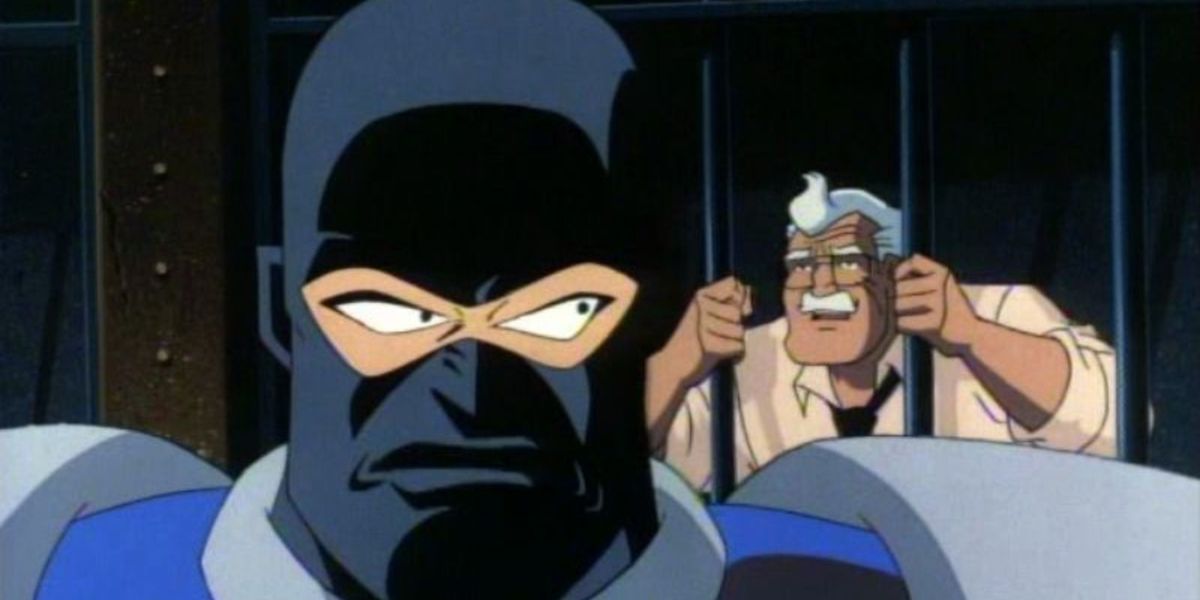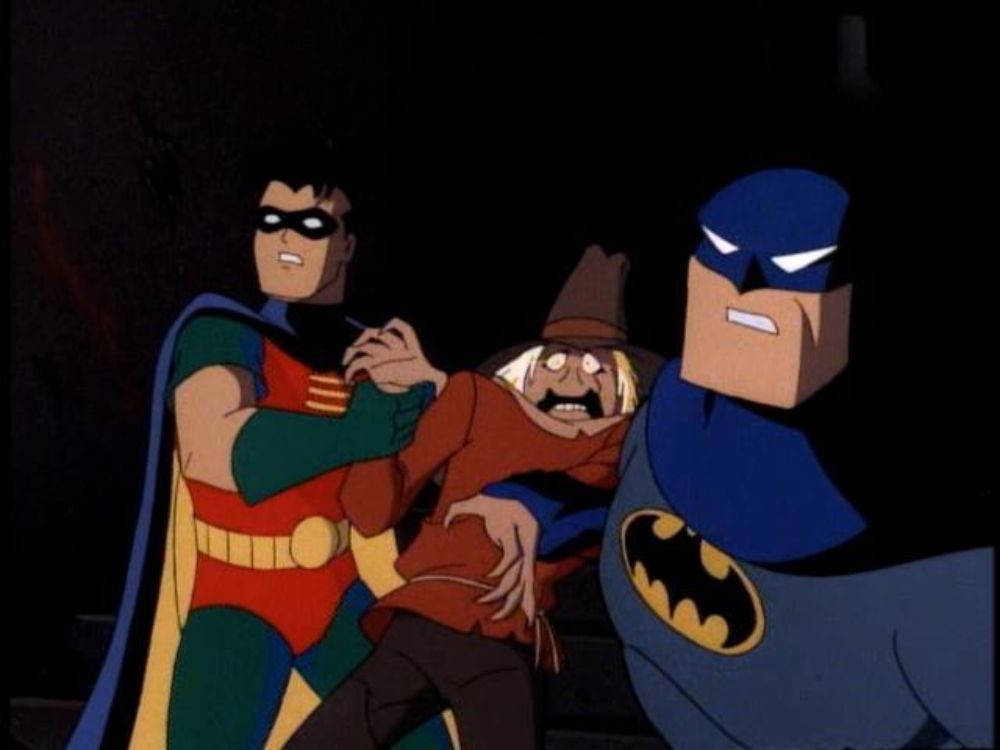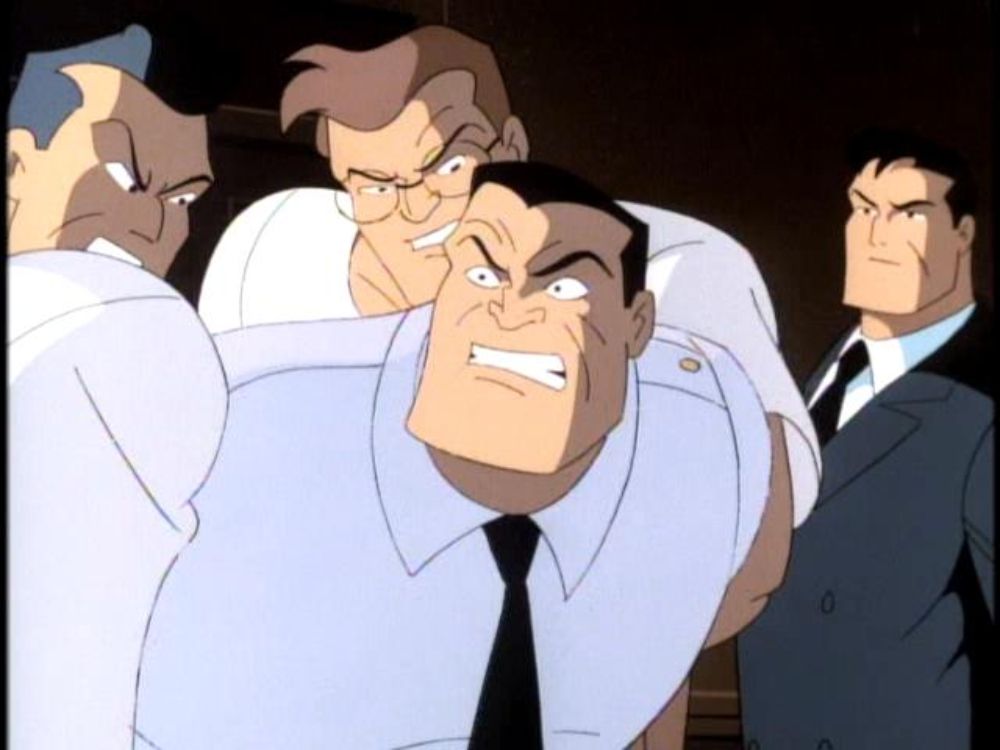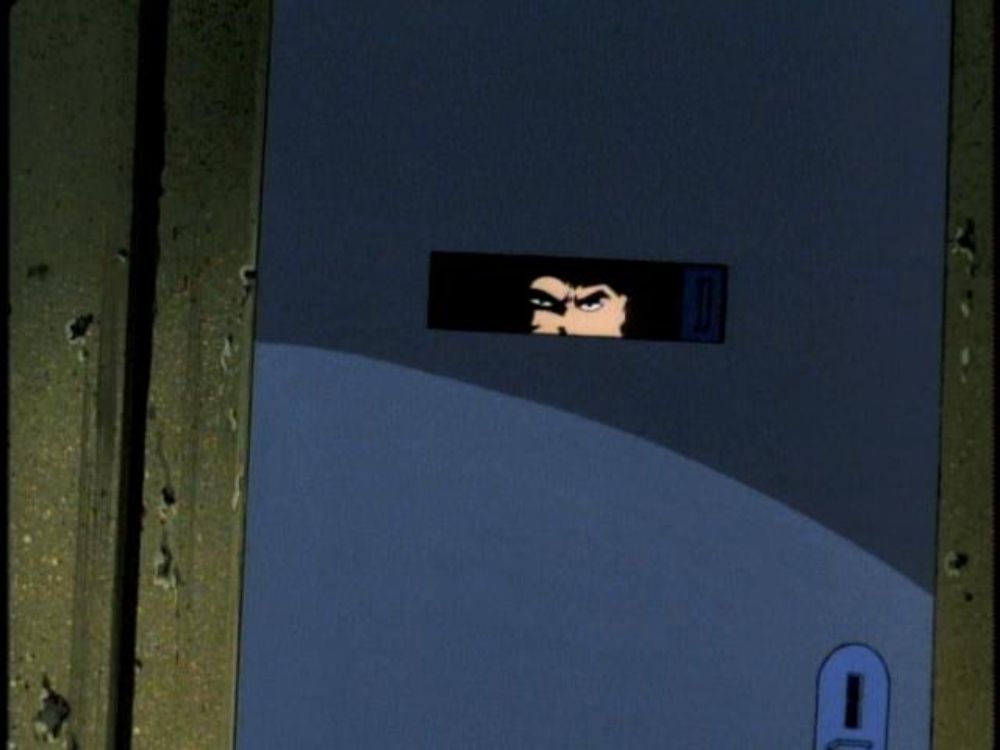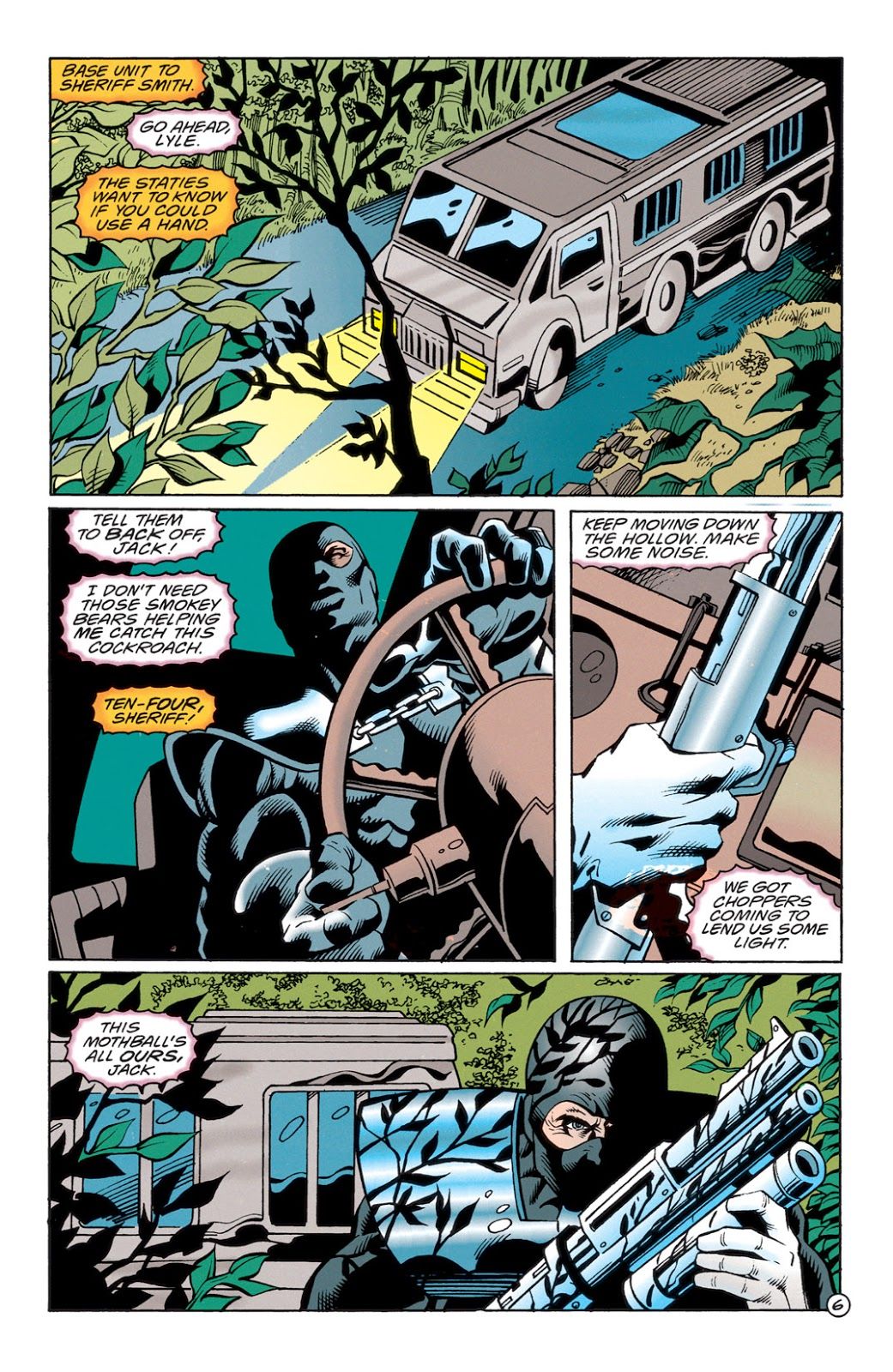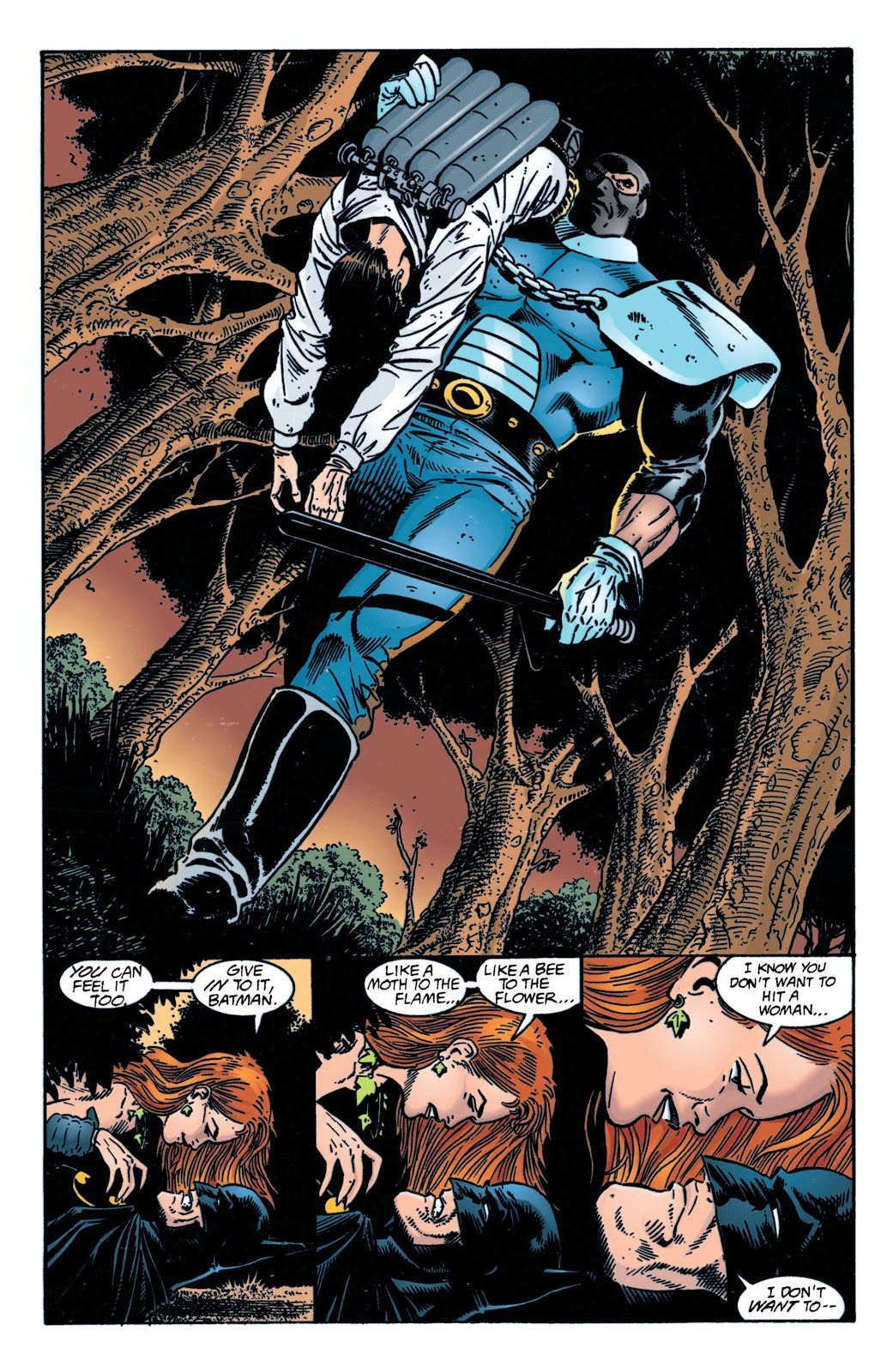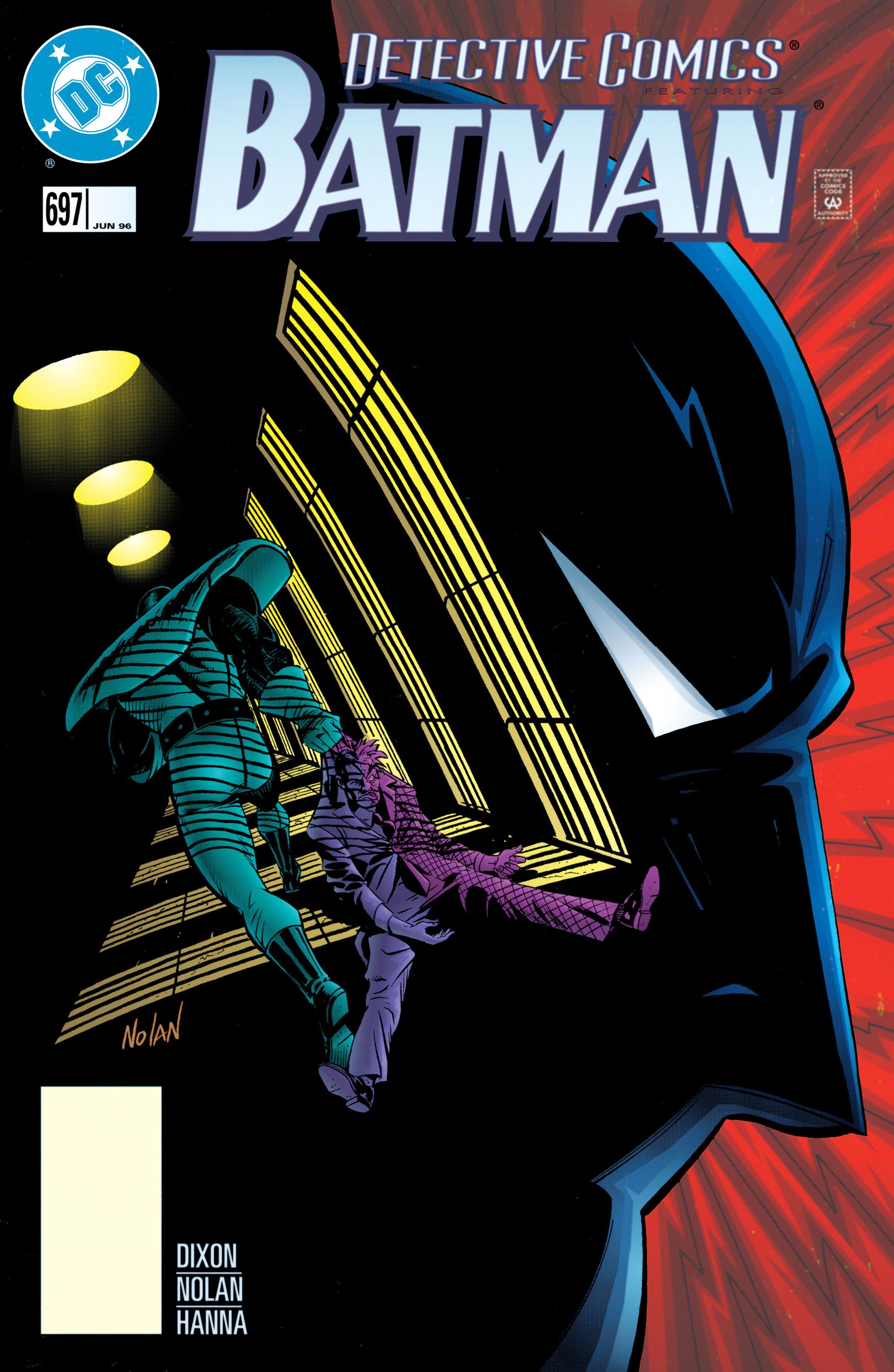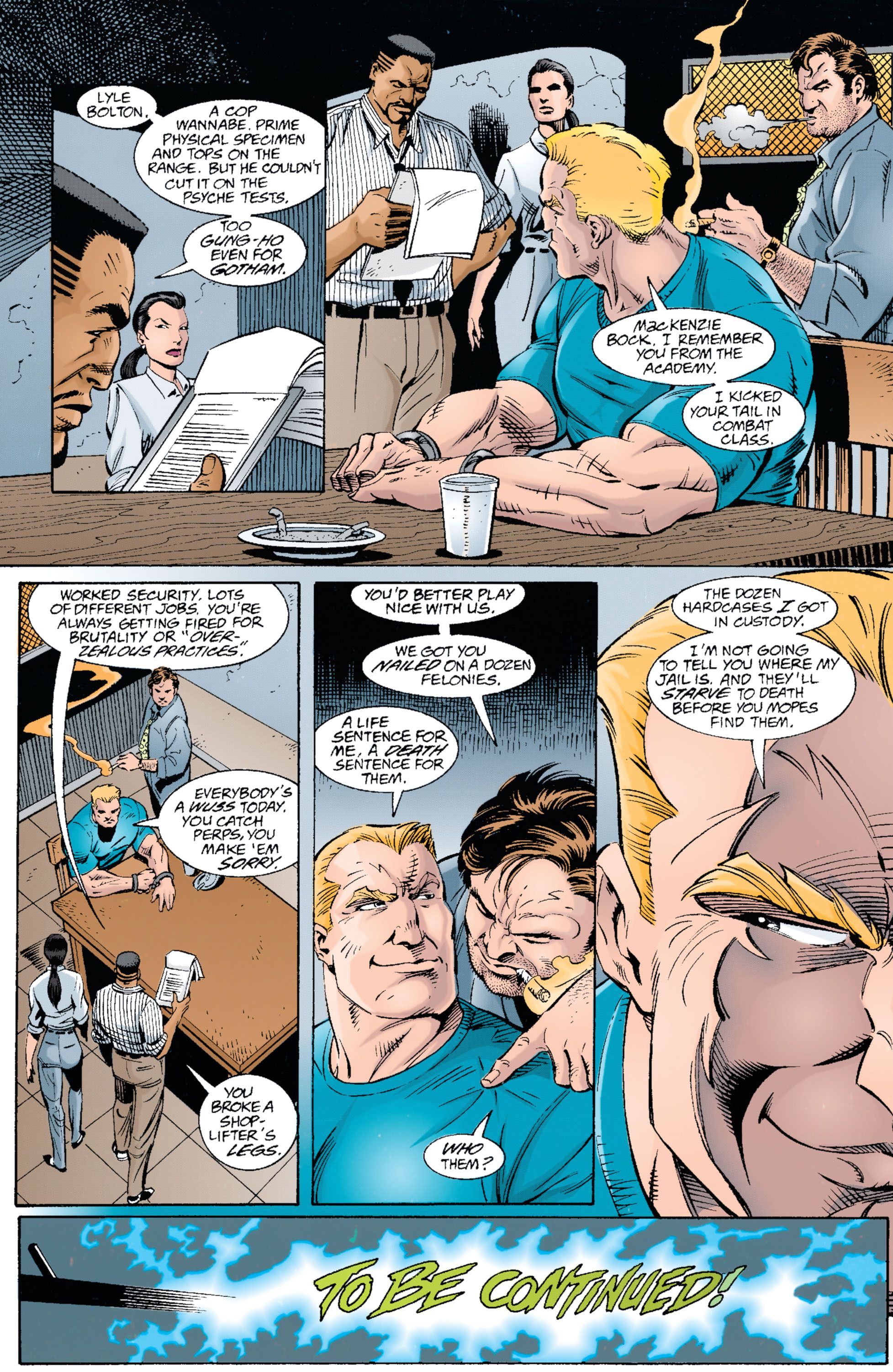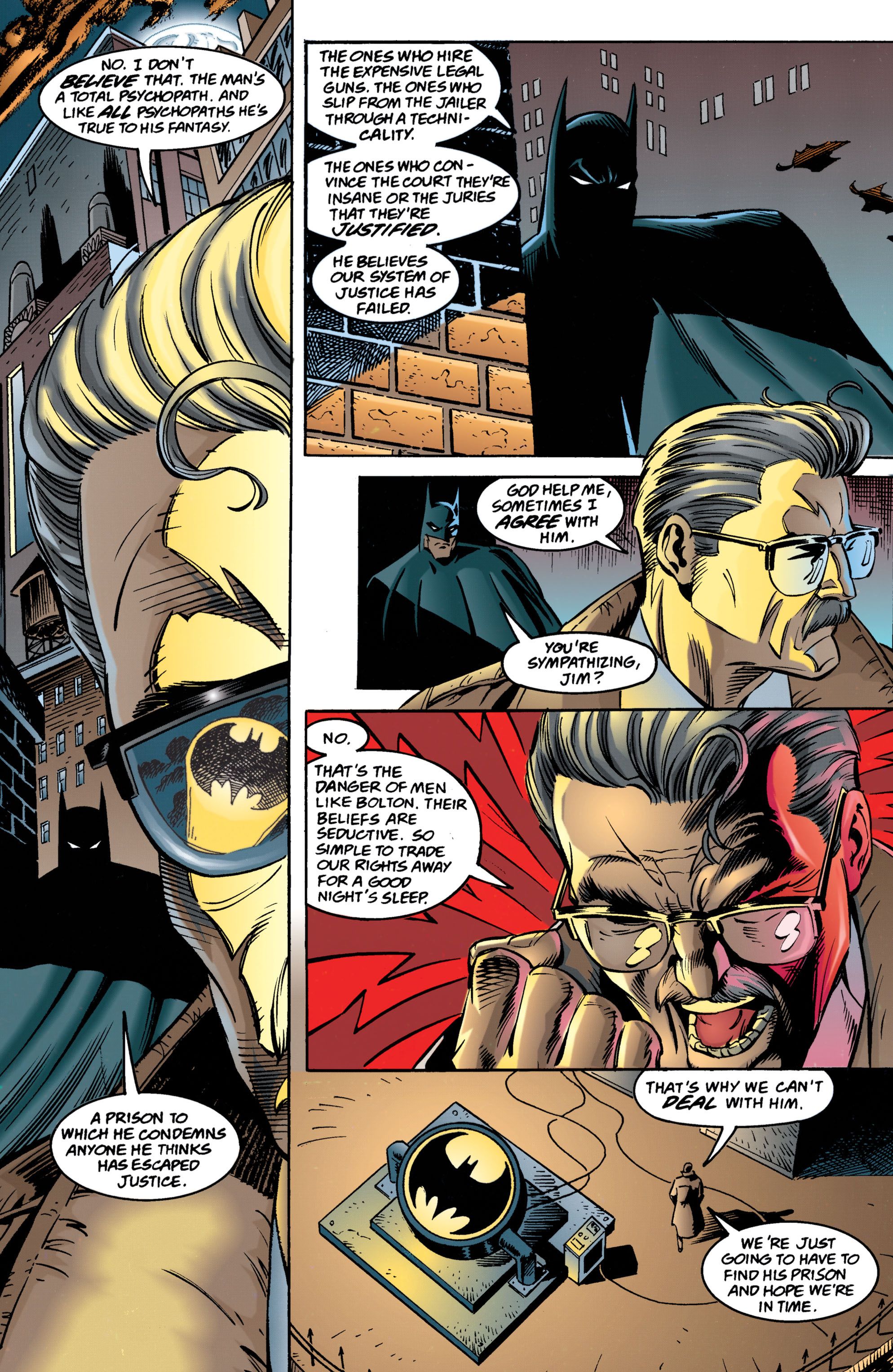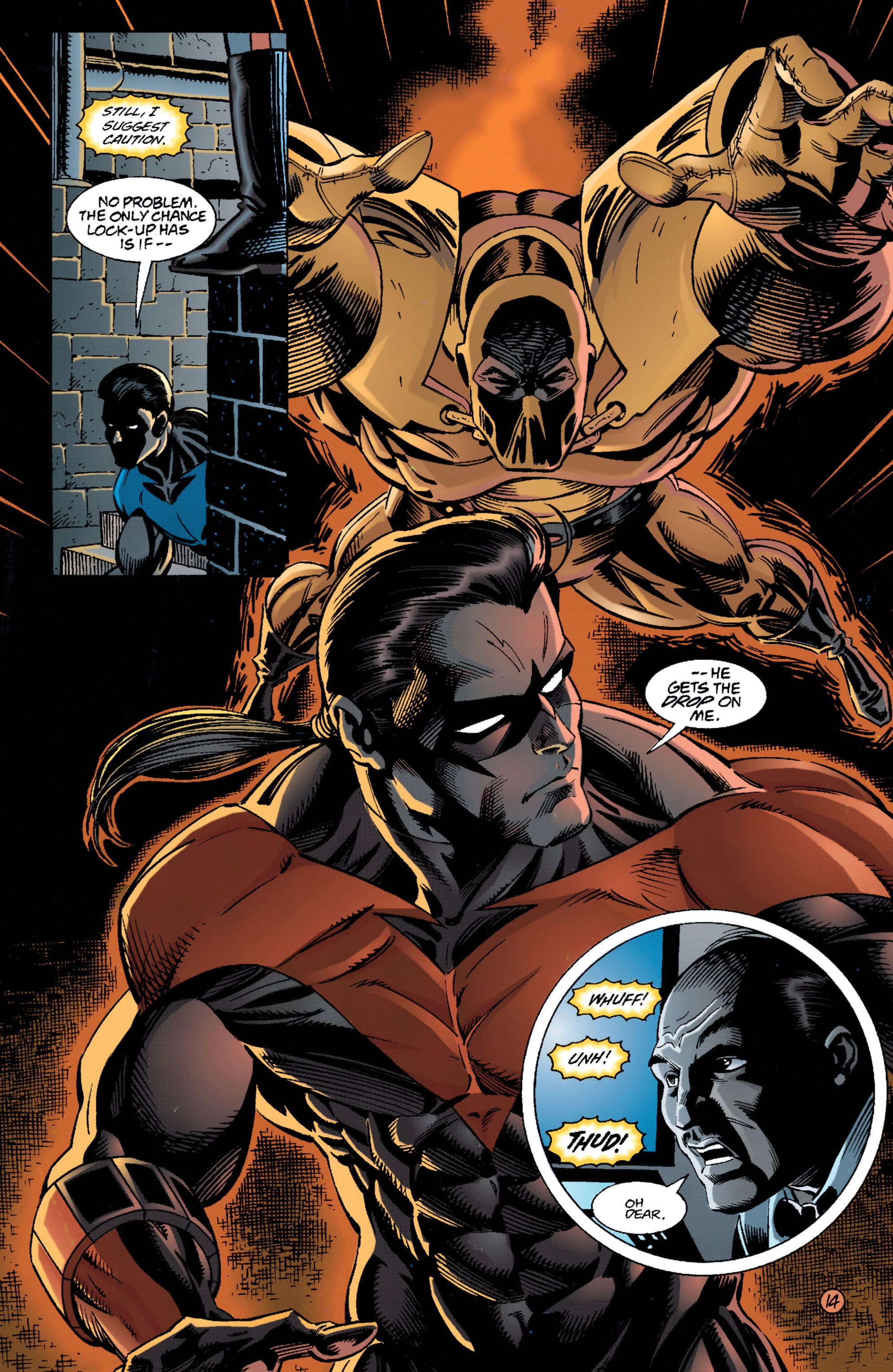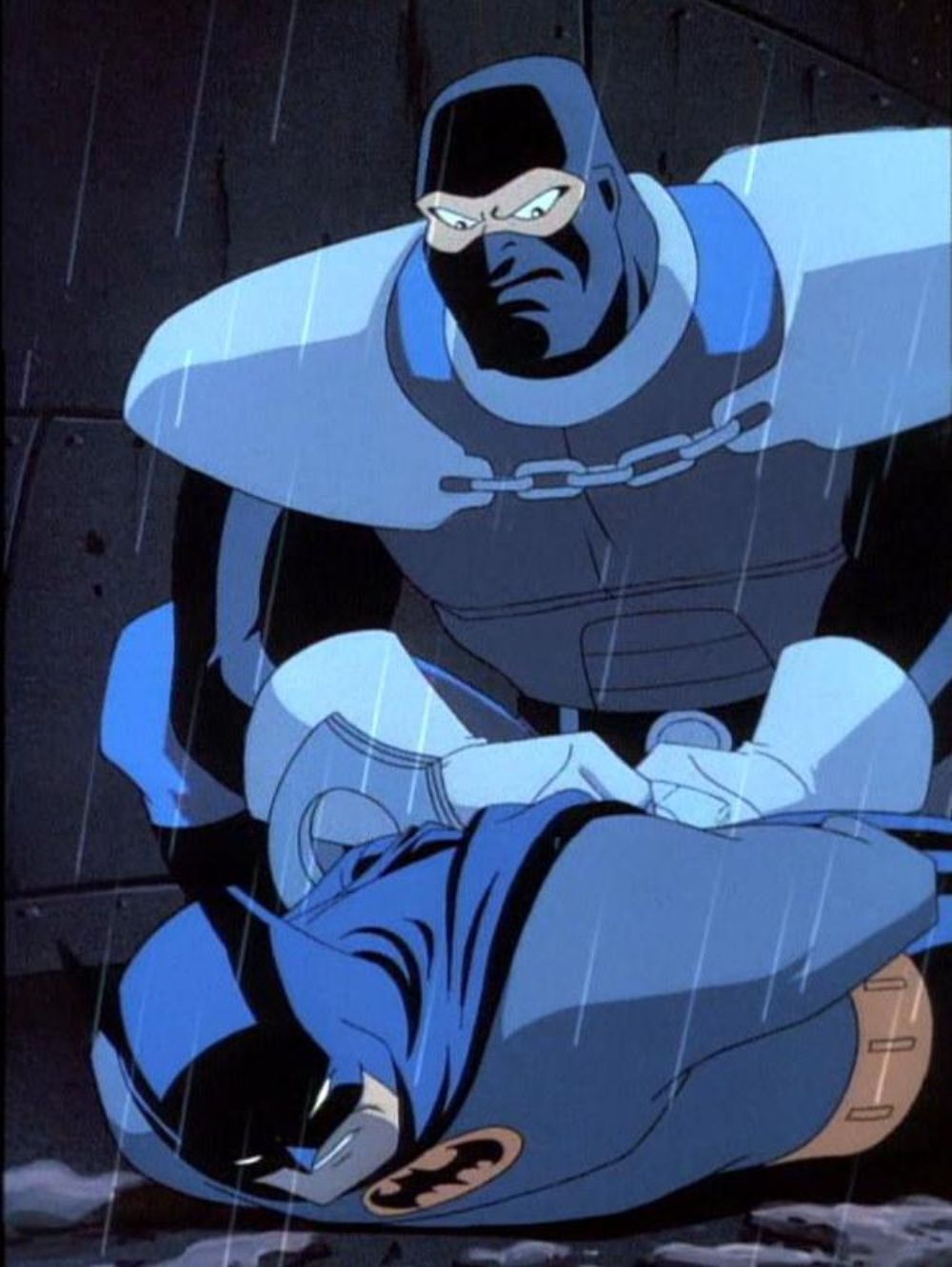Welcome to "Adventure(s) Time's" 67th installment, a look at animated heroes of the past. Our entry this week comes from a suggestion by Emmet O'Brien, who asked to see some of the cartoon-to-comics creations. So, let's examine the debut of a Batman: The Animated Series villain ... very much of his time.
Airing on Nov. 19, 1994, "Lock-Up" introduces its titular villain, in a nicely animated episode from director Dan Riba and the Dong Yang animation studio. Like many of the episodes from this era, the plot is by Paul Dini. Writing team, and huge comics fans, Marty Isenberg & Robert N. Skir provide the script.
RELATED: This Kid-Friendly Batman: The Animated Series Episode Was ... Quite Disturbing
Surprisingly, the first act essentially has no action scenes, opening with Batman and Robin hauling a terrified Scarecrow back to Arkham Asylum. That's actually a great hook for beginning a story -- what could possibly cause the Scarecrow to be so afraid?
We discover the answer is Lyle Bolton, Arkham's new head of security. Unlike the previous regimes, Bolton is a hardcase when it comes to discipline. He's also pretty darn good at actually keeping these dangerous felons locked away. Scarecrow is the first escapee during his tenure. Bolton promises Batman he'll do better.
Batman senses something's off about Bolton. As Bruce Wayne, he convenes a hearing with Commissioner Gordon, Mayor Hill, and Arkham's Dr. Bartholomew. This sequence is one of the few moments that truly feel like a Dini episode. Scarecrow, Harley Quinn, and Ventriloquist all provide testimonies, the joke being none of them are willing to publicly call out Bolton. Bruce calls their bluff and announces a plan to extend Bolton's contract. The inmates then drop the facade, listing Bolton's various abuses. (Still, it has the feel of a lighter Dini episode. Almost as if it's being played for laughs.) Bolton snaps under their accusations, openly displaying his unbalanced behavior.
Bolton is fired--not unlike several villains with Dini origin stories. What Bolton's origin lacks, however, is anything to make him sympathetic. There is a brief moment in his lonely apartment, as he broods on the unfairness of his persecution, that comes close. Watching reporter Summer Gleeson give a perky report on Poison Ivy's latest crime spree, Bolton fumes. He rails about the "permissive, liberal media" that glamorizes criminals.
RELATED: Batman: The Animated Series Honest Trailer Tackles the Classic
Now, there could be a way to bend the story, to play up the idea that maybe Bolton has a point. For all we know, the Gotham media really does have a fascination with costumed criminals. If Bolton felt unfairly punished for ensuring they stay behind bars, while the media paints glowing portraits of the scum, there could be an angle there.
Instead, we see Bolton reappear six months later as the costumed vigilante Lock-Up. (Jumping ahead months in the narrative is another familiar element in Dini origin stories.) He's already firmly crazy, and unjustly kidnapping Summer Gleeson after her date with Bruce Wayne.
He slips into his Batman tights, granting us the first real action sequence nearly ten minutes into the episode. Lock-Up escapes with Summer, and within hours, has kidnapped Dr. Bartholomew and Commissioner Gordon.
Batman doesn't have to strain himself to discern Lock-Up's identity. And, oh yeah, since this aired during the Adventures of Batman & Robin era, that means Robin has to be around for the fun. FOX says so. Truthfully, he has some of the best lines this episode. "Another fine villain made possible by a grant from the Wayne Foundation," he quips, much to Batman's agitation.
The heroes locate Lock-Up at a decommissioned naval vessel (once a temporary replacement for Stonegate Penitentiary), where he's now keeping his victims prisoner. It's not the most exciting of climatic battles, but the animation is steady and impressive. In the end, Bolton is defeated off-camera during an underwater confrontation with Batman. Some have griped about this...but, eh. He's Batman. You've got to let Batman slide on this kind of stuff.
The final shot has Bolton welcomed with jeers and laughter as Arkham's newest inmate. Bolton doesn't care, though. He's where he can keep an eye on the criminals. A bit comics fans had already seen with the Punisher. And Rorschach.
NEXT PAGE: Lock-Up Is Fast-Tracked Into DC Comics Canon ... For Some Reason
It's amusing to think Harley Quinn had to wait around seven years to make her "official" debut in DC Comics continuity. Borderline C-lister Lock-Up was introduced in canon after only a year and some change.
Lock-Up's official debut was teased with two appearances. The first was in Robin #24 (January 1996). We see him as a mystery figure, dragging away the villain Charaxes.
The next month, he's abducting Maxwell Veezey, a joke villain known as the Allergent. A one-page scene from Detective Comics #694.
But Lock-Up's true debut later occurs in a three-parter (a three-parter!) in Detective Comics, starting with issue #697. The storyline's from the creative team of Chuck Dixon, Graham Nolan, and Scott Hanna. The cover for #697 features Nolan, uncharacteristically, channeling Todd McFarlane. (Or maybe this is his homage to Kelley Jones, who did the covers for many of his Bat-comics.)
The opening chapter of the story has Two-Face abducted from police custody by Lock-Up. Batman discerns his captor is the same man behind the other recent criminal abductions. Nightwing is called in to aid Batman and Robin, and the trio quickly have Black Mask's stooge Joe Rabbit in custody. News of Rabbit cutting a deal leaks, infuriating Lock-Up, just as Batman suspected. A few action scenes later, Lock-Up is in custody. (By the way, Nolan's work here really is outstanding.)
One problem, though. The "guests" of his secret prison are going to starve to death if the GCPD can't locate them soon. And Lock-Up ain't talking. The next chapter has Lock-Up escaping the police, forcing Batman to begin a new search.
For the most part, this is action-heavy storytelling. But there's a moment between Batman and Gordon that hints at a deeper philosophical conflict. The idea of criminals getting off easy, of the system not serving the actual victims, used to show up fairly often in the 1990s. It'd occasionally be used to justify giving the more violent vigilantes of the era their own series. Dixon is dropping the Arkham angle, but this might've been a way to make Lock-Up a little less one-note. (The story's clear that Bolton is merely a wannabe cop here. He couldn't pass the psych tests.)
Not a lot of philosophy in the rest of the arc, though. Batman, Robin, and Nightwing all individually stalk potential Lock-Up victims. Ultimately, it's Robin who has a run-in with the vigilante, becoming his next inmate. With Oracle's help (dang, every Gotham hero had a role here), Batman and Nightwing locate Lock-Up. A final battle at the abandoned gun battery turned prison ultimately sends Lock-Up back behind bars. And Graham Nolan gets as '90s as I've ever seen him for a few pages.
Amazingly, this story also ends with Batman defeating Lock-Up in an offscreen confrontation. Just accept he can do this, people.
THE WRAP-UP
DESIGN-Y
Lock-Up's design intentionally evokes the 1990s anti-heroes. Shoulder pads were huge back then. So were militaristic influences. The chains were possibly inspired by Spawn. (Although they fit into his aesthetic anyway.) I like the way his mouth movement is still visible under his mask. It's a cool effect.
You'll notice the comics version of Lock-Up has blond hair, not black. I wonder if this was done to further separate him from the Punisher.
HEY, I KNOW THAT VOICE
Bruce Weitz voices Lock-Up. He's best known for playing the feral Sgt. Mick Belker on '80s drama Hill Street Blues. He'll go on to voice Bruno Mannheim on the DCAU Superman series.
OH, NOW HE CARES ABOUT CIVIL LIBERTIES
"Lock-Up" tends to be criticized for being rather dull, and for devoting so much attention to a purely one-note villain. I've never had a real problem with the episode, however. It's true Lock-Up doesn't have the depth to compete with the truly classic villains from this series. But, hey, as a done-in-one baddie, he's fine.
Perhaps the context of the episode has been lost over the years. Ultra-violent vigilantes who viewed criminals as irredeemable scum were all the rage in this era. And a segment of Batman fans truly wanted him to turn into this. Luckily, the creative teams in charge of the character in the '90s knew how foolish this would be. (Too bad certain people given hundreds of millions of dollars to make films about the hero couldn't realize this.)
Given that the Batman comics already had Azrael as a living argument against these anti-heroes, maybe Lock-Up is redundant. Still, his printed debut's a fast-moving arc with solid art and fun characters. And the closing with Robin, nearly drowning, facing Lock-Up's supervillain escapees...sure, that tops the cartoon's ending. Not a classic, but Batman could always need new grist for the villain mill. Wouldn't it be crazy if they actually put Harley in the real comics, though?
That’s all for now. If you have any suggestions for the future, just leave a comment or contact me on Twitter.

